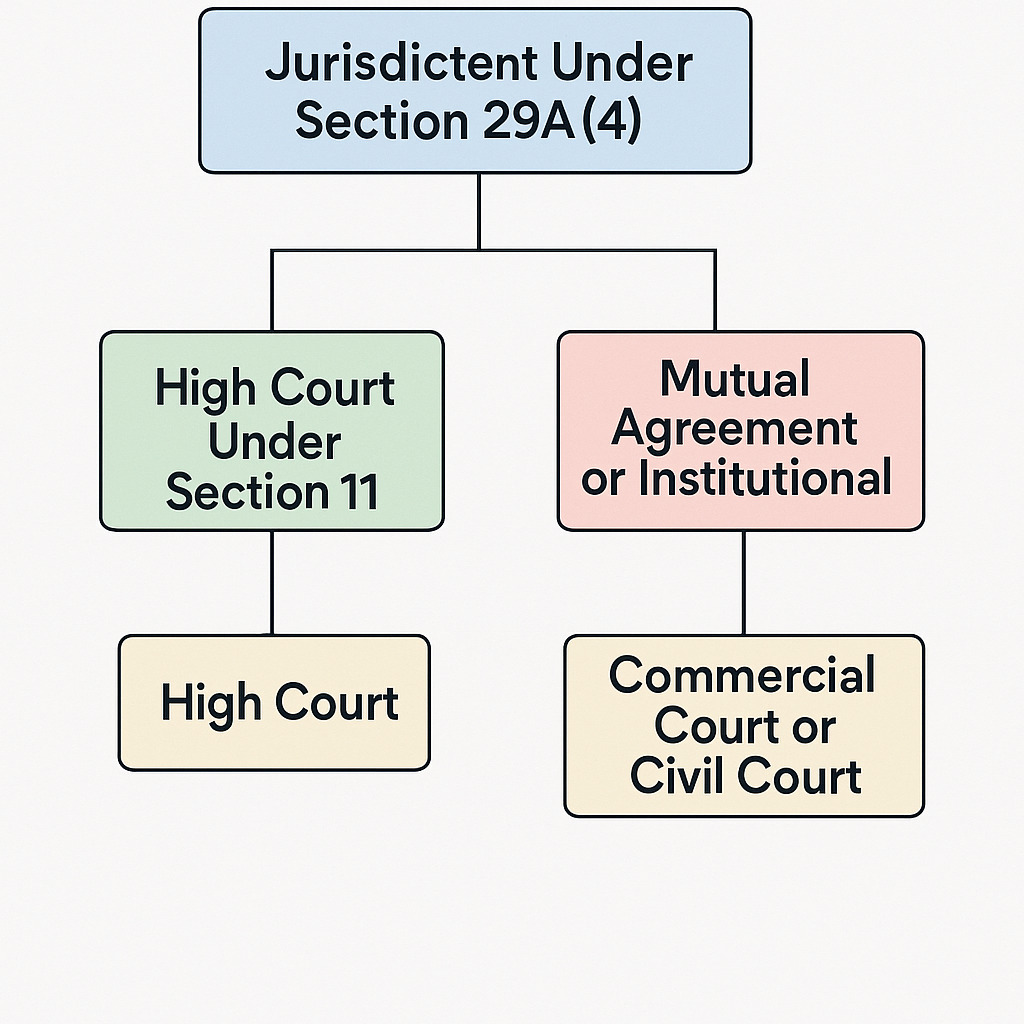View News
Section-29A-Arbitration-Mandate-Extension-High-Courts-Jurisdiction-Limited-to-Its-Own-Appointees

Section 29A Arbitration Mandate Extension: High Court's Jurisdiction Limited to Its Own Appointees
Introduction
Arbitration in India has gained prominence as a preferred dispute resolution mechanism due to its efficiency, cost-effectiveness, and emphasis on party autonomy. However, prolonged proceedings have undermined these advantages. In response, the Arbitration and Conciliation (Amendment) Act, 2015 introduced Section 29A to enforce strict timelines for concluding arbitral proceedings.
While the provision seeks to instill procedural discipline, it has raised critical jurisdictional questions—particularly concerning which court is empowered to extend an arbitrator’s mandate once the prescribed period has lapsed.
Understanding Section 29A: Timelines and Extension Framework
Section 29A lays down the timeframe for issuing an arbitral award:
-
Time Limit: The arbitral tribunal must deliver its award within 12 months from the completion of pleadings, as per Section 23(4).
-
Extension by Consent: Parties may mutually agree to extend this period by an additional 6 months.
-
Court Intervention: If the award is not passed within the extended timeframe, the arbitrator’s mandate automatically terminates unless an extension is sought under Section 29A(4).
-
Court Powers: The court can:
-
Extend the period.
-
Impose conditions.
-
Substitute the arbitrator(s), if necessary.
-
This provision aims to introduce accountability but necessitates judicial involvement when delays occur.
Jurisdiction under Section 29A(4): Which Court Has Authority?
Statutory Definition of 'Court'
Under Section 2(1)(e) of the Arbitration Act, the term "Court" refers to:
-
Principal Civil Court of original jurisdiction, or
-
High Court, where it has original jurisdiction over the subject matter.
Key Jurisdictional Principle
Courts have consistently upheld that only the court which appointed the arbitrator holds the power to extend their mandate under Section 29A(4):
-
If the arbitrator was appointed by the High Court under Section 11, then only that High Court can consider a Section 29A(4) application.
-
If the arbitrator was appointed:
-
Mutually by parties, or
-
Through an institutional mechanism,
then the application for extension must be filed before the Commercial Court or Civil Court having jurisdiction under Section 2(1)(e).
-
Judicial Interpretation: Key Case Laws
Several High Court decisions have clarified and reinforced this jurisdictional distinction:
-
NHAI v. Gammon Engineers (Delhi High Court):
Held that the court had no jurisdiction under Section 29A(4) since the arbitrator was not appointed by the High Court under Section 11. -
Cabra Instalaciones Y Servicios SA v. MSEDCL (Bombay High Court):
Reaffirmed that the power to extend an arbitrator's mandate lies exclusively with the court that made the original appointment.
These rulings underscore a balanced approach—preserving judicial oversight while avoiding unwarranted High Court interference in arbitrations not initiated through them.
Practical Implications for Arbitration Stakeholders
The current judicial stance on Section 29A(4) has important consequences for litigants and legal practitioners:
1. Strategic Use of Section 11
-
If parties desire future High Court jurisdiction for extension, they should consider invoking Section 11 for arbitrator appointment.
2. Correct Forum Identification
-
Extension applications must be directed to the appropriate court—either the High Court or relevant Civil/Commercial Court—based on who appointed the arbitrator.
3. Avoiding Procedural Delays
-
Filing an application in the wrong forum can cause delays or dismissal, potentially terminating the arbitrator’s mandate.
4. Monitoring Deadlines
-
Both arbitrators and parties must vigilantly track procedural timelines to prevent inadvertent expiry of the mandate and associated consequences.
Conclusion
Section 29A represents a progressive step towards efficient and time-bound arbitration in India. However, its success hinges on procedural accuracy and clarity in judicial forums. The consistent judicial interpretation—restricting High Court jurisdiction under Section 29A(4) to cases where it made the original appointment—ensures:
-
Preservation of judicial hierarchy,
-
Minimization of frivolous applications to higher courts, and
-
Encouragement of strategic planning in arbitrator selection.
As arbitration continues to evolve in India, practitioners must stay attuned to these procedural nuances to protect client interests and uphold the process's credibility.
"Unlock the Potential of Legal Expertise with LegalMantra.net - Your Trusted Legal Consultancy Partner”
Disclaimer: Every effort has been made to avoid errors or omissions in this material in spite of this, errors may creep in. Any mistake, error or discrepancy noted may be brought to our notice which shall be taken care of in the next edition In no event the author shall be liable for any direct indirect, special or incidental damage resulting from or arising out of or in connection with the use of this information Many sources have been considered including Newspapers, Journals, Bare Acts, Case Materials , Charted Secretary, Research Papers etc.
Prerna Yadav
LegalMantra.net team

